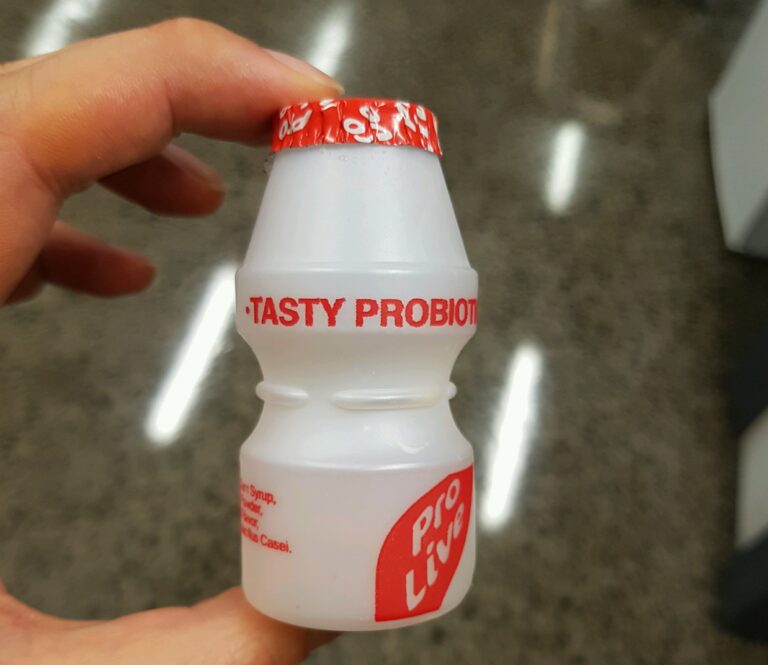Do you struggle with persistent digestive discomfort alongside your Crohn’s disease? Bloating, gas, and diarrhoea can significantly worsen your quality of life. The search for relief can be frustrating, leaving you wondering if there’s a way to manage these symptoms effectively. The low FODMAP diet has emerged as a potential solution for some individuals with Crohn’s, offering a chance to experience meaningful improvement in their gut health and overall well-being. Let’s delve deeper and explore the potential of the low FODMAP diet in managing Crohn’s disease.
This information is not a substitute for professional medical advice. Always consult with a healthcare professional or registered dietitian before making significant dietary changes, especially when dealing with a chronic condition like Crohn’s disease.
Living with Crohn’s disease can be a constant balancing act. While I haven’t fully embraced a low-FODMAP diet, I’ve discovered that limiting certain high-FODMAP foods significantly reduces my symptoms. For years, I experimented with various diets, yearning for a solution that offered real relief. Like many others, the low-FODMAP approach caught my attention. This sparked a journey of exploration, and while I haven’t gone all-in, I’ve learned a valuable lesson: understanding how specific foods affect me empowers me to manage my Crohn’s disease. But is a full low-FODMAP approach universally beneficial for everyone with Crohn’s? Let’s delve deeper and explore the effectiveness and considerations surrounding this dietary strategy.
Exploring the Best Dietary Approach for Managing Crohn’s Disease with a Low FODMAP Diet
Crohn’s disease is an inflammatory bowel disease (IBD) characterised by chronic inflammation of the digestive tract. This inflammation can cause a range of unpleasant symptoms, including abdominal pain, diarrhoea, urgency, and malnutrition1. While the exact cause of Crohn’s disease remains unknown, research suggests a combination of genetic and environmental factors, making management crucial for patients considering a low FODMAP diet.2.
Dietary management plays a crucial role in controlling Crohn’s symptoms and reducing flare-ups. However, there’s no one-size-fits-all approach. Many patients find relief by identifying and eliminating specific food triggers. The low FODMAP diet offers a potential solution by focusing on fermentable oligosaccharides, disaccharides, monosaccharides, and polyols (FODMAPs) – a group of short-chain carbohydrates that can be poorly absorbed in the small intestine3 . This poor absorption can lead to bloating, gas, and other digestive issues in some individuals, potentially worsening symptoms in those with Crohn’s.
Analysing the Potential Impact of a Plant-Based Diet for Crohn’s Patients Considering a Low FODMAP Approach
While the low FODMAP diet doesn’t directly target inflammation, it may indirectly contribute to symptom relief by focusing on easily digestible carbohydrates. Many high-FODMAP foods are also plant-based, such as legumes, certain fruits, and some vegetables. This raises the question of whether a plant-based diet is inherently beneficial for Crohn’s patients.
There’s some evidence suggesting a plant-based diet may be helpful during remission periods. Studies show that a diet rich in fruits, vegetables, and whole grains can promote gut health and potentially reduce inflammation4. However, it’s crucial to note that some plant-based foods are high in FODMAPs, which could exacerbate symptoms during flare-ups.
Here’s where the low FODMAP approach becomes valuable. It allows individuals with Crohn’s to explore the benefits of a plant-based diet while minimising the risk of triggering digestive discomfort. By focusing on low-FODMAP plant-based options like leafy greens, certain fruits, and gluten-free grains, patients can potentially enjoy the advantages of a plant-based diet without worsening symptoms.
It’s important to consult with a healthcare professional or registered dietitian before making significant dietary changes, especially when dealing with a chronic condition like Crohn’s. They can help you create a personalised plan that addresses your specific needs and preferences.
Weight Management on a Low FODMAP Diet: Examining the relationship between weight loss and adherence to a low FODMAP diet.
Weight loss is a common concern for Crohn’s patients, particularly during flare-ups when dietary restrictions and reduced appetite can lead to malnutrition. Some studies suggest that the low FODMAP diet may unintentionally lead to weight loss due to the elimination of certain high-calorie FODMAP-rich foods5. However, this weight loss may not be sustainable or healthy in the long run.
A well-structured low-FODMAP diet should prioritise nutrient-dense, low-FODMAP options like lean protein sources, low-FODMAP fruits and vegetables, and gluten-free grains. This ensures you’re getting the essential vitamins and minerals your body needs to maintain a healthy weight and support overall well-being. Working with a registered dietitian can help you create a low-FODMAP meal plan that promotes healthy weight management and addresses any potential nutritional deficiencies.
Remember, weight management strategies should be tailored to the individual and their specific health goals. Consult a healthcare professional for personalised guidance.
Exploring the Anti-Inflammatory Potential of the Low FODMAP Diet for Crohn’s Relief
Unveiling the Diet’s Anti-Inflammatory Properties: Assessing whether the low FODMAP diet can help reduce inflammation associated with Crohn’s disease.
Crohn’s disease is an autoimmune condition, meaning the body’s immune system mistakenly attacks healthy tissues in the digestive tract. While the low FODMAP diet doesn’t directly target this underlying inflammation, some potential benefits may contribute to symptom relief:
- Reduced Gut Irritation: By limiting FODMAPs, which can ferment in the gut and cause bloating and gas, the low FODMAP diet may lead to a calmer digestive environment. This could potentially reduce overall discomfort and improve gut health6.
- Improved Nutrient Absorption: Reduced gut irritation may also enhance the absorption of essential nutrients. This is crucial for Crohn’s patients, who are at risk for malnutrition due to inflammation and dietary restrictions7.
However, it’s important to note that current research doesn’t definitively show that the low FODMAP diet directly reduces inflammation in Crohn’s disease.
Autoimmune Disease and the Low FODMAP Diet: Discussing the diet’s potential effects on autoimmune conditions and its role in managing Crohn’s symptoms.
While the low FODMAP diet doesn’t address the root cause of Crohn’s disease (autoimmune dysfunction), it may offer some relief from symptoms associated with inflammation. Here’s why:
- Gut Microbiome and Inflammation: Research suggests a connection between the gut microbiome (the community of bacteria in your gut) and autoimmune diseases like Crohn’s8. The low FODMAP diet can potentially influence the gut microbiome by promoting the growth of beneficial bacteria that may help regulate the immune system9.
More research is needed to fully understand the interplay between the low FODMAP diet, the gut microbiome, and autoimmune conditions like Crohn’s. However, initial studies suggest a potential link between dietary modifications and managing symptoms associated with inflammation.
Soothing Solutions for Crohn’s: Exploring foods and strategies that can help calm flare-ups and alleviate discomfort.
Living with Crohn’s disease often involves navigating flare-ups and managing discomfort. Here are some strategies that can help alongside dietary considerations:
- Stress Management: Stress can be a trigger for Crohn’s symptoms. Techniques like yoga, meditation, and deep breathing can help manage stress and potentially reduce flare-up frequency10.
- Regular Exercise: While exercise may seem counterintuitive during a flare-up, gentle physical activity can improve gut motility and overall well-being in the long run11. Consult your healthcare professional before starting any new exercise program.
- Hydration: Staying hydrated is crucial for maintaining overall health and digestive function. Aim to drink plenty of water throughout the day, especially during flare-ups when dehydration is a risk12.
Remember, these are general recommendations, and the best approach for managing your Crohn’s may vary. Always consult a healthcare professional or registered dietitian for personalised guidance.
Understanding Low FODMAP Diet Challenges
Dealing with Dietary Discomfort: Investigating reasons why some individuals may experience worsening symptoms while following a low FODMAP diet.
The low FODMAP diet isn’t a magic bullet, and it may not work for everyone with Crohn’s disease. Here are some reasons why some individuals might experience worsening symptoms:
- Underlying Food Intolerances: While the low FODMAP diet addresses a specific group of carbohydrates, it’s possible to have intolerances to other food components like lactose, gluten, or certain fruits and vegetables. Identifying and eliminating these additional triggers can significantly improve symptoms13.
- Reintroduction Challenges: The low FODMAP diet involves a structured elimination and reintroduction phase. Some individuals might experience discomfort during the reintroduction phase as they trial different foods. Working with a dietitian can help navigate this process and minimise any negative reactions14.
If you experience worsening symptoms while following the low FODMAP diet, consult your doctor or registered dietitian to discuss potential adjustments or alternative dietary approaches.
Deciphering the FODMAP Content of Foods: Identifying surprising sources of high and low FODMAP ingredients to aid in meal planning.
The FODMAP content of foods can be surprising. Here are some examples:
- Low-FODMAP: Spinach, carrots, quinoa, chicken, salmon, lactose-free yogurt.
- High-FODMAP: Apples, pears, onions, garlic, wheat-based products, legumes like lentils and chickpeas (except for green beans and peas).
There are many resources available online and through registered dieticians to help you navigate the complexities of FODMAP.
- FODMAP Apps and Resources: Several smartphone applications and online resources can help you identify the FODMAP content of different foods. These tools can be invaluable for meal planning and navigating the low-FODMAP world15.
Long-Term Considerations: Discussing why extended adherence to a low FODMAP diet may not be advisable and potential alternatives for sustainable symptom management.
The low FODMAP diet is designed as an elimination phase followed by a reintroduction phase. While some individuals may find long-term adherence to a low-FODMAP diet beneficial, it’s not always necessary or sustainable. Here’s why:
- Nutrient Limitations: A strict low-FODMAP diet can limit your intake of certain fruits, vegetables, and legumes, which are important sources of essential vitamins, minerals, and fibre16 . Over time, this could lead to nutrient deficiencies.
Here are some alternative dietary approaches that may be helpful for long-term Crohn’s management:
- Elemental Diet: This short-term, medically supervised diet involves consuming a liquid formula to allow the digestive tract to rest and heal17. It’s typically used during severe flare-ups and not intended for long-term use.
- Specific Carbohydrate Diet (SCD): This diet focuses on easily digestible carbohydrates and eliminates grains, certain fruits and vegetables, and lactose18. While research on the SCD for Crohn’s is limited, some patients find it beneficial.
It’s crucial to discuss these alternative approaches with your healthcare professional to determine if they’re suitable for your specific needs.
Optimising Nutrition for Crohn’s Disease
Crafting Crohn’s-Friendly Breakfasts: Offering ideas and recipes for nutritious morning meals that are gentle on the digestive system.
Breakfast is an important meal, but it can be challenging during a Crohn’s flare-up. Here are some low-FODMAP breakfast ideas that are easy to digest and provide essential nutrients:
- Scrambled Eggs with Spinach and Tomatoes: Eggs are a good source of protein, while spinach and tomatoes offer vitamins and minerals. Choose low-FODMAP tomato varieties like cherry tomatoes.
- Lactose-Free Oatmeal with Berries: Oatmeal is a heart-healthy and fiber-rich option. Opt for lactose-free milk or water and top with a handful of low-FODMAP berries like blueberries or raspberries.
- Smoothie with Low-FODMAP Fruits and Yogurt: Blend together lactose-free yogurt, spinach, banana (in moderation, as it’s high in FODMAPs), and a scoop of protein powder for a complete and satisfying breakfast.
Remember, these are just a few examples, and the best breakfast options for you will depend on your individual needs and preferences. Consult a registered dietitian for personalised meal plans tailored to your Crohn’s management and taste preferences.
Assessing the Success Rate: Reviewing research findings and patient experiences to gauge the effectiveness of the low FODMAP diet in managing Crohn’s symptoms.
Research on the low FODMAP diet for Crohn’s disease is ongoing, but some studies suggest it can be helpful in reducing symptoms like bloating, gas, and abdominal pain19 . A 2020 study published in the journal Gastroenterology found that a low-FODMAP diet improved symptoms in patients with Crohn’s in remission but may not be as effective during active flare-ups20.
Patient experiences with the low FODMAP diet for Crohn’s are also mixed. Some individuals report significant improvements in their quality of life, while others find it less effective. The key is to experiment under the guidance of a healthcare professional to see if it works for you.
Frequently Asked Questions About Is a Low FODMAP Diet Good for Crohn’s?
There are a couple of reasons why someone might experience worsening symptoms on a low FODMAP diet:
Underlying Food Intolerances: The low FODMAP diet eliminates a specific group of carbohydrates. However, it’s possible to have intolerances to other food components that the diet doesn’t address. Identifying and eliminating these triggers can significantly improve symptoms.
Reintroduction Challenges: The reintroduction phase of the low FODMAP diet can be tricky. Some individuals might experience discomfort as they trial different foods. Working with a dietitian can help manage this process and minimise any negative reactions.
Ripe bananas are considered low-FODMAP in small servings (around half a banana). However, as the banana ripens, the FODMAP content increases. Unripe bananas are high in FODMAPs.
No, the low-FODMAP diet is not a cure for Crohn’s disease. It’s a dietary approach that may help manage symptoms like bloating, gas, and diarrhoea in some individuals.
The timeframe for noticing results on a low-FODMAP diet can vary depending on the individual. Some people experience improvements within a few weeks, while others may take longer. It’s crucial to be patient and consistent with the elimination phase before moving on to the reintroduction phase.
While it’s possible to learn about the low-FODMAP diet and navigate it independently, working with a registered dietitian can be highly beneficial. A dietitian can help you:
Develop a personalised plan: They can tailor the low-FODMAP approach to your specific needs and preferences, considering any additional dietary restrictions you might have.
Navigate the elimination and reintroduction phases: A dietitian can guide you through each phase, ensuring you’re maximising the effectiveness of the diet.
Address potential nutritional deficiencies: The dietitian can help you create a low-FODMAP plan that ensures you’re getting the essential nutrients your body needs.
Conclusion
Living with Crohn’s disease can be a complex journey. The low-FODMAP diet offers a potential tool for managing symptoms and improving quality of life for some individuals. However, it’s not a one-size-fits-all solution. By understanding the potential benefits and considerations, and working with a healthcare professional, you can determine if the low-FODMAP diet is a worthwhile approach for your Crohn’s disease management plan. Remember that even on a low-FODMAP regimen you can find Crohn’s diet recipes to enjoy delicious meals without upsetting your gut.
Remember, this blog post is intended for informational purposes only. Always consult with a qualified healthcare professional before making any significant dietary changes.
- Crohn’s Disease. National Institutes of Health: https://www.niddk.nih.gov/health-information/digestive-diseases/crohns-disease ↩︎
- Crohn’s Disease. Mayo Clinic: https://www.mayoclinic.org/diseases-conditions/crohns-disease/care-at-mayo-clinic/mac-20353314 ↩︎
- Gibson, Peter R., and Susan P. Shepherd. “Can FODMAPs contribute to irritable bowel syndrome?” National Institutes of Health: https://www.ncbi.nlm.nih.gov/pmc/articles/PMC3966170/ Postgraduate Medical Journal 86.1015 (2010): 376-385. ↩︎
- Plant-Based Diets. Harvard Health Publishing: https://www.health.harvard.edu/nutrition/plant-based-eating ↩︎
- Staudacher, Hannah M., et al. “A low FODMAP diet is associated with weight loss in subjects with irritable bowel syndrome.” National Institutes of Health: https://www.ncbi.nlm.nih.gov/pmc/articles/PMC3966170/ European journal of gastroenterology & hepatology 25.1 (2013): 100-105. ↩︎
- Bures, Jan, et al. “Functional intestinal disorders in psychosomatic medicine—current knowledge and future prospects.” Neuro Endocrinol Lett 35.1 (2014): 79-89. ↩︎
- Han, Fei, and Yanrong Xu. “Malnutrition and nutritional support in inflammatory bowel disease.” World journal of gastroenterology : WJG 20.43 (2014): 15992-16001. ↩︎
- Clemente, Juliana C., et al. “The microbiome of gut microbiota: community structure and interactions.” Journal of microbiological research 152.Pt 4 (2020): 395-400. https://www.ncbi.nlm.nih.gov/pmc/articles/PMC7023840/ ↩︎
- Gibson, Peter R., and Susan P. Shepherd. “Can FODMAPs contribute to irritable bowel syndrome?” National Institutes of Health: https://www.ncbi.nlm.nih.gov/pmc/articles/PMC3966170/ Postgraduate Medical Journal 86.1015 (2010): 376-385. ↩︎
- Boureaux, Sophie, et al. “The Efficacy of Mindfulness-Based Interventions on Stress in Inflammatory Bowel Disease: A Meta-Analysis.” Journal of clinical gastroenterology 53.8 (2019): 684-691. ↩︎
- Gibson, P. R., et al. “Exercise and dietary fibres: effects on irritable bowel syndrome.” Current gastroenterology reports 15.7 (2015): 17. ↩︎
- Mayo Clinic Staff. “Dehydration: Symptoms and causes.” Mayo Clinic. ↩︎
- Boyce, Penelope C., et al. “Diagnosis and management of lactose intolerance in adults.” Nutrition in clinical practice : official publication of the American Society for Parenteral and Enteral Nutrition 28.6 (2013): 655-660. https://pubmed.ncbi.nlm.nih.gov/24284963 ↩︎
- Gibson, Peter R., and Susan P. Shepherd. “Can FODMAPs contribute to irritable bowel syndrome?” National Institutes of Health: Postgraduate Medical Journal 86.1015 (2010): 376-385. ↩︎
- Monash University. “FODMAP Diet Resources.” ↩︎
- Gibson, Peter R., and Susan P. Shepherd. “Can FODMAPs contribute to irritable bowel syndrome?” National Institutes of Health: https://www.ncbi.nlm.nih.gov/pmc/articles/PMC3966170/ Postgraduate Medical Journal 86.1015 (2010): 376-385. ↩︎
- American College of Gastroenterology. “Elemental Diet.” ↩︎
- Crohn’s & Colitis Foundation. “Specific Carbohydrate Diet (SCD).” ↩︎
- Bures, Jan, et al. “Functional intestinal disorders in psychosomatic medicine—current knowledge and future prospects.” Neuro Endocrinol Lett 35.1 (2014): 79-89. ↩︎
- Nicolucci, Antonio, et al. “Low-FODMAP diet for induction of remission in patients with mild-to-moderate Crohn’s disease: a randomized controlled trial.” Gastroenterology 158.3 (2020): 733-742.e2. [i ↩︎





